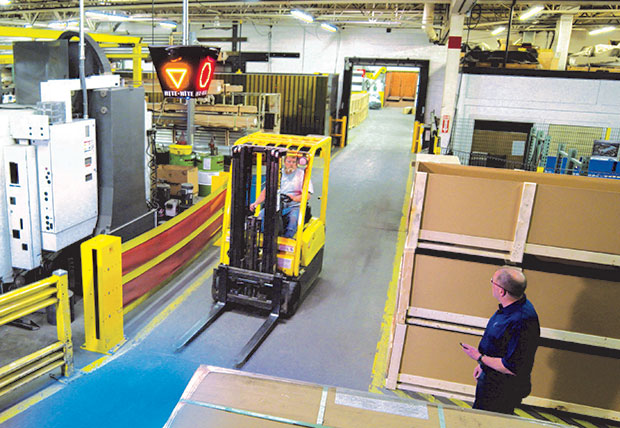Smart systems, automation and state-of-the-art technology, based on the Industrial Internet of Things (IIoT) and artificial intelligence (AI), promise greater scope for improving safety on or near loading docks. However, as accident statistics make clear, these continue to be amongst the most dangerous places to work.

Amongst the biggest trends we see today is the rise of the Internet of Things (IoT), along with the development of ‘smart devices’. Huge amounts of data are gathered, via built-in sensors, from industrial equipment connected to the Internet. Through analysis and interpretation of the data, businesses are able to make significant changes. The insights gained can inform all kinds of decisions, especially when it comes to improving operational efficiency, reducing waste or working more safely. In the warehouse, for example, smart systems help improve the visibility of people, vehicles and goods. Another important trend is the increasing adoption of automation. Three factors are accelerating this process: an increase in online orders; a labour shortage; and innovations that make automation more affordable.
Automation may be used to detect hazards and prevent accidents. Augmented reality technology can give warehouse managers a clear and complete overview of their operations. As integration of human and artificial intelligence (AI) continues to grow, we are reaching the point where AI (drones, AMRs) takes over all the repetitive and simple tasks currently performed by employees. This will allow employees to focus instead on more complex tasks and on those where humans can add value.
Sadly, despite all these innovations, accidents still occur every day. The magnitude of this issue should not be underestimated. A major study by the European Union (EU) concerning workplace accidents in 2018 found that 3,332 employees suffered fatal accidents. This death toll is 60 higher than the figure for 2017. In the same year, there were 3.1 million non-fatal accidents that resulted in at least four calendar days of absenteeism; 8,137 more than in 2017.
The highest number of accidents was recorded in the construction sector (20.5%), but the transport and storage sector still took an alarming second place (16.7%). Many of these are in the loading area and, in reality, the number of fatalities there is probably higher if accidents in the manufacturing sector (15.2%) are included. National statistics also highlight the scale of workplace deaths. Over a four-year period from 2015 to 2018, France recorded the highest number of fatal workplace accidents (2,390), followed by Italy (2,031) and Germany (1,754). Spain and the UK were not far behind, with 1,280 and 1,041 respectively. Even taking into account the different numbers of employees per country, these figures are staggering – and everyone agrees that even one fatality is one too many.
The costs attributed to accidents are also mind-blowing. On top of direct expenses relating to claims, or to recruiting and training replacement staff, there are indirect costs such as loss of reputation and damage to the brand. An investigation in the UK by the Health and Safety Executive (HSE) estimated the total cost of one accident to a company at €45,000. With a profit margin of 10%, an additional €450,000 in sales is needed to compensate for that loss.
What all logistics managers have in common is the need for greater efficiency in and around the loading dock, with an emphasis on safety. Profit and productivity should never take precedence over human life.
More on www.ritehite.com.




Comments are closed.